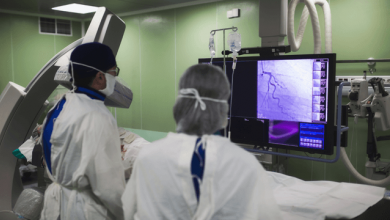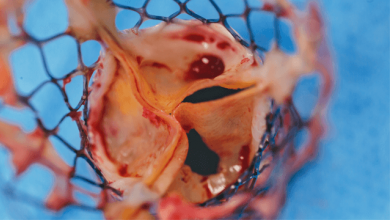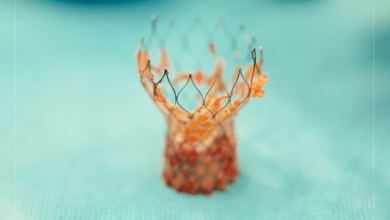Search results
Author(s):
Dariusz Jagielak
,
Radoslaw Targonski
,
Dariusz Ciecwierz
Added:
3 years ago
Author(s):
Ashok Seth
,
Sajal Gupta
,
Vivudh Pratap Singh
,
et al
Added:
3 years ago
In 1995, stent implantation became the second revolution in interventional cardiology when Colombo et al. demonstrated that intravascular ultrasound (IVUS)-guided post-dilatation of stents to achieve optimal expansion and larger lumens led to reduced restenosis and stent thrombosis (ST).1 This ‘bigger is better’ hypothesis became the technical cornerstone of all stent implantation in the bare…
View more
Predilatation and TAVI
Author(s):
Matteo Pagnesi
,
Luca Baldetti
,
Paolo Del Sole
,
et al
Added:
3 years ago
Article
Author(s):
Angela Hoye
Added:
3 years ago
The coronary tree is comprised of arteries which divide into ever smaller branches to supply the myocardium. This means that the diameter of the vessel proximal to a bifurcation is always larger than the diameter of the main vessel distal to the bifurcation. The proximal optimisation technique (POT) was proposed by Dr Olivier Darremont as a technique to compensate for this difference in diameters…
View more
Author(s):
Peter Mortier
,
Heleen MM van Beusekom
,
Matthieu De Beule
,
et al
Added:
3 years ago
Incomplete stent apposition (ISA) or stent malapposition is the lack of contact between stent struts and the underlying arterial wall. ISA has been associated with significantly higher levels of thrombus deposition1 and is typically assessed by intravascular imaging techniques such as optical coherence tomography (OCT) and intravascular ultrasound (IVUS).2–4 These imaging modalities are useful to…
View more
Author(s):
Nikolaos Konstantinidis
,
Georgios Sianos
Added:
3 years ago
Coronary chronic total occlusions (CTOs) are identified in up to one-third of all patients referred for diagnostic coronary angiography,1 with an incidence increasing with age.2 CTOs still represent the most technically challenging lesion subset that interventional cardiologists face. The benefits of successful CTO recanalisation are related to improved survival,3,4 most notably in patients with…
View more
Author(s):
John Phineas O’Donnell
,
Crochan J O’Sullivan
Added:
3 years ago
The demand for replacing degenerated bioprosthetic valves (BPVs) is steadily rising owing to the increasing burden of heart disease, ageing populations, advances in surgical intervention and limited durability of current-generation surgical BPVs. The issue is exacerbated by the increasing trend of surgical BPV replacement, especially in younger patients who are likely to require future…
View more
Author(s):
Tom Adriaenssens
,
Giovanni J Ughi
,
Jan Dhooge
,
et al
Added:
3 years ago
In the bare metal stent (BMS) era, several intravascular ultrasound(IVUS) studies have validated the strategy of reducing in-stent restenosis rates by a strict adherence to an optimal stent implantation technique, predominantly by avoiding stent underexpansion.1 In a first phase after the introduction of drug-eluting stents(2003), the spectacular reduction in restenosis rates, based on…
View more
Author(s):
Angela McInerney
,
Rafael Vera-Urquiza
,
Gabriela Tirado-Conte
,
et al
Added:
2 years ago
Transcatheter Aortic Valve Implantation for Severe Aortic Stenosis - Overcoming the Challenges
Author(s):
Thomas Walther
,
Johannes Blumenstein
Added:
3 years ago
Article














